Urgent Care
Diagnosis, treatment, and services for your everyday medical needs such as flu shots and lab work.
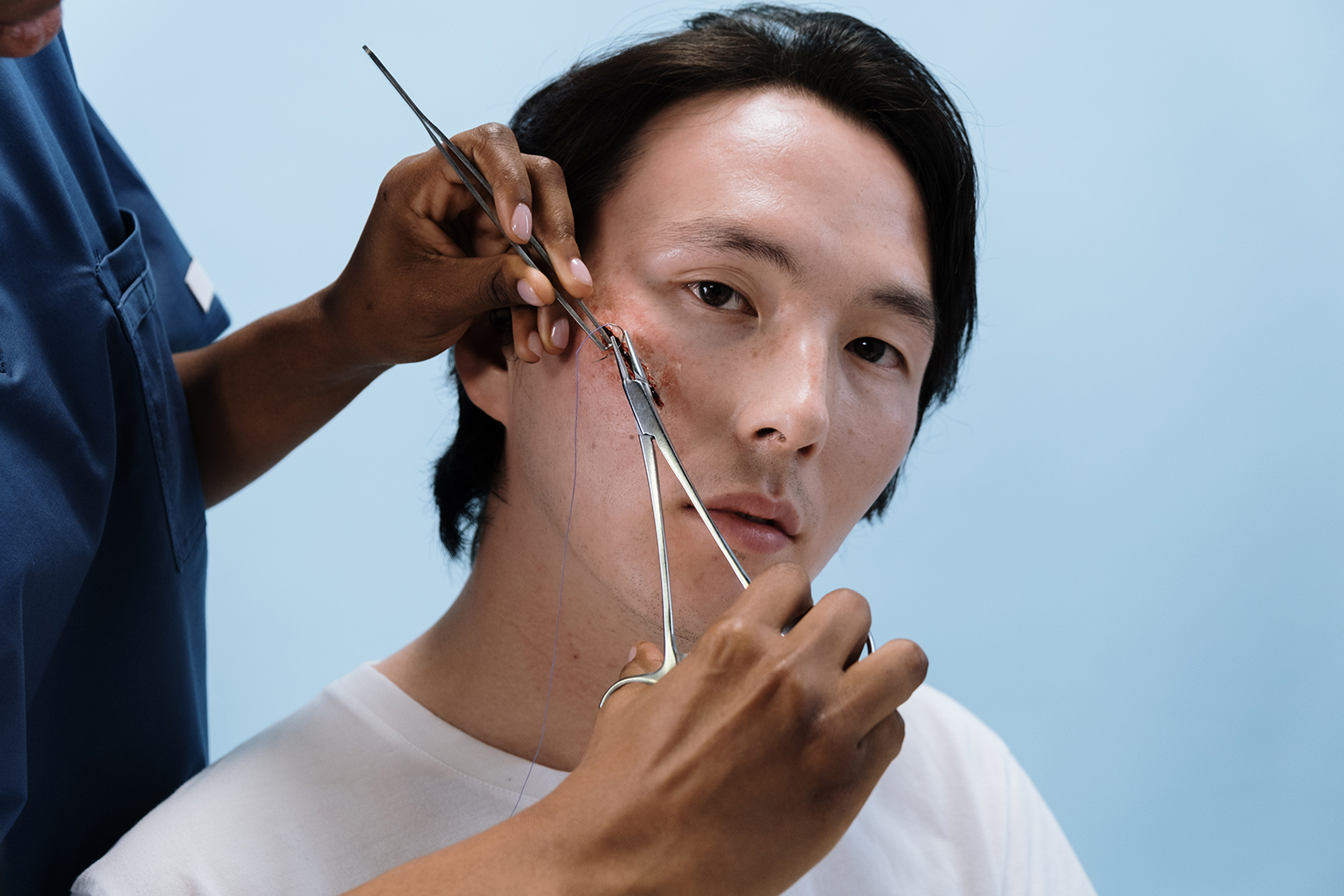
Major or small, we can all think back to a time when we cut, scraped, or grazed ourselves. Sometimes all we needed was a band-aid, other times stitches. Either way, these unexpected accidents happen, especially for kids. Children love to play and sometimes when they’re monkeying around on the jungle gym or the playground, they fall and find themselves with a laceration. As a parent, it can be terrifying to find your son or daughter suffering from an open wound which is why understanding the difference between a deep wound and a shallow one is so important.
A laceration is a tear or opening in the skin caused by an injury. Lacerations may be small and need only minor treatment or may be large enough to require emergency medical care. Wounds such as cuts, scrapes, and lacerations are a split of the skin caused by an impact of some sort. It is common for children to sustain these types of injuries through play, sports, accidents, or ordinary day-to-day activities. Lacerations and other abrasions can happen in almost any area of the body. Depending on the area affected and the severity of the cut, there may be a lot of bleeding or very little.
Minor wounds do not usually require medical attention and can be managed with standard first-aid procedures at home. You should apply pressure to your child’s wound with a clean paper towel or cloth and after removing pressure, the bleeding should slow down or stop altogether. If bleeding continues, reapply pressure and take your child to their healthcare provider for further evaluation.
If bleeding has stopped or slowed, rinse the wound and surrounding area with water. If you can see any dirt or debris in the wound, use a pair of sanitized tweezers to remove any particles. Very small amounts of dirt are OK in grazes but if there are large amounts that you can’t remove, take them to a medical professional who can do it for you.
Lastly, cover the wound with a bandage. This will help to keep the wound clean and will protect the area as it heals. Keeping the wound covered also keeps the wound moist, which helps the healing process.
Like minor wounds, try to stop the bleeding by applying pressure to the injured area. If this doesn’t work and there is a large amount of bleeding that does not quickly stop, or the wound is very deep or is a deep puncture wound, or the wound is gaping apart, despite controlling the bleeding it may need closing with glue or stitches which will require a visit to their healthcare provider.
Stitches are special types of thread that hold wound edges together while they heal. Stitches help to stop bleeding, reduce scarring and decrease the chance of infection in the wound.
Steri-Strips are special adhesive bandages that can sometimes be used on shallow wounds instead of stitches. Steri-Strips perform the same functions as stitches.
Lacerations that involve the face, are longer than 1/2 inch, are deep, or are bleeding heavily, may require stitches.
If your child’s healthcare provider needs to place stitches or use Steri-Strips to close a laceration, you will be given specific instructions on how to care for the stitches. Treatment at home will be based on the place and size of the laceration, the type of stitches used, and any special needs noted by your child’s physician. Sometimes antibiotics are given to help prevent infection in the wound.
Some stitches dissolve and do not need to be removed while other stitches require removal. Your child’s provider will let you know when to return to have stitches removed. It’s important to know that you should not attempt to remove your child’s stitches at home.
For minor wounds, change the bandage whenever it becomes wet or dirty and replace it with a fresh one. Watch for signs of infection as the wound heals and if it seems to not be healing properly, take them to their healthcare provider for evaluation.
Typically, lacerations are no big deal but if your child’s wound doesn’t stop bleeding and the cut looks deep, your best bet is to have them looked at by a medical professional. Wounds can be scary, and no parent wants to witness their son or daughter bleeding, but rest assured, the experts at Chai Care will take great care of your child and will have them as good as new in no time!
* Legal disclaimer: The content of this article and the entire Chai Care blog is for educational purposes only; it does NOT constitute medical advice and must not be considered as such. Please consult a medical professional regarding any symptoms or health concerns you or your loved ones.
Feb 21, 2023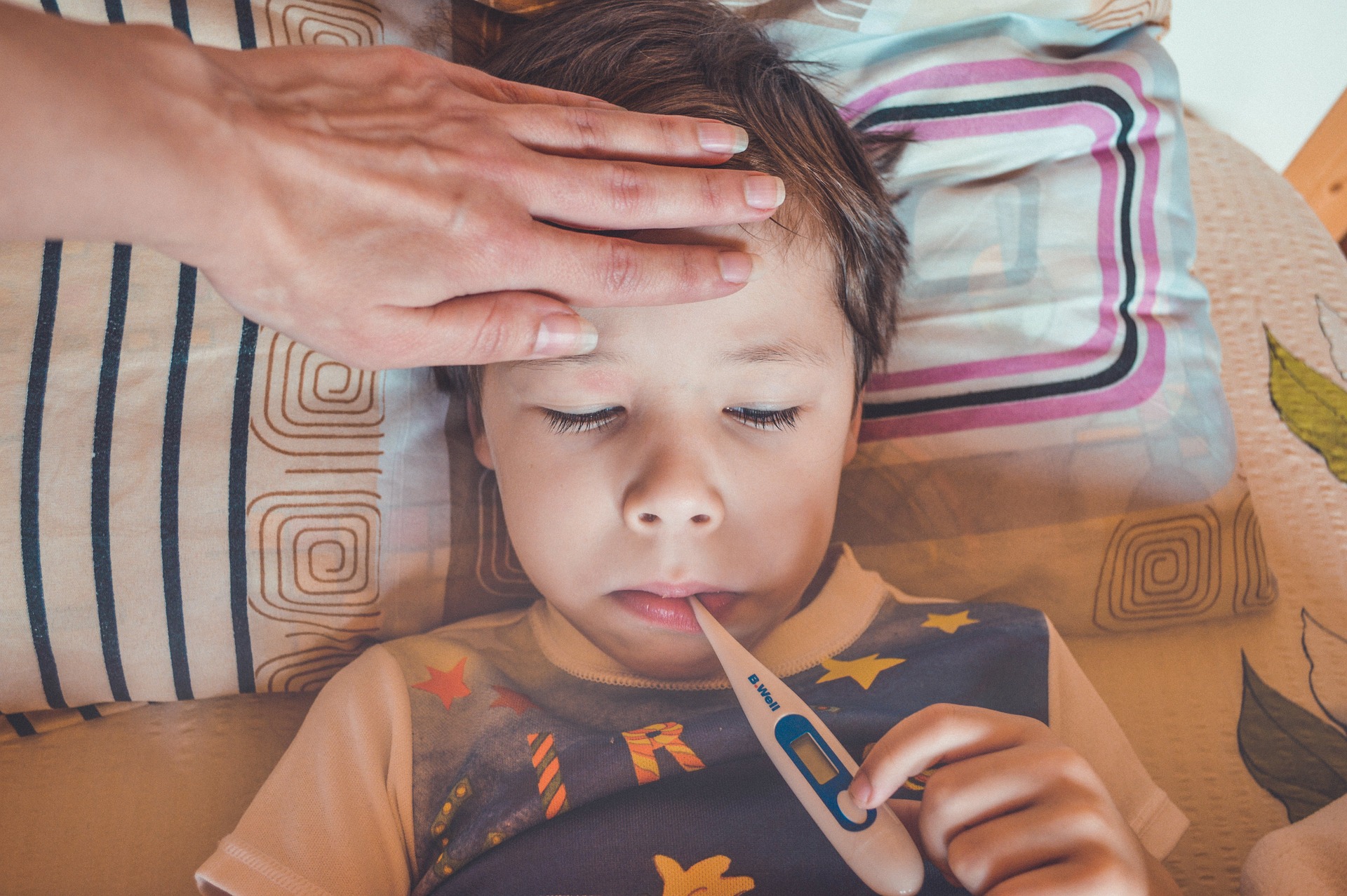
There is no other way of saying it, but we all poop. It’s something every person does and believe it or not, your stool says a lot about your health. With that being said, your child may have a tough time expressing this because of their lack of knowledge and they may be embarrassed to talk about it. It is important for you as the parent to be aware of your child’s bathroom habits so you know if they are ill or if you need to take them to see their healthcare provider. This may not be the most fun information to learn, but it is very important.
Diarrhea is when stools are loose and watery. When experiencing diarrhea, your child may also need to go to the bathroom more often. Diarrhea is a common problem. It may last 1 or 2 days and go away on its own. If diarrhea lasts more than 2 days, your child may have a more serious problem and should be seen by their healthcare provider.
The symptoms your child may experience when they have diarrhea can vary depending on if it’s mild or severe and what the cause of diarrhea might be. Sometimes there is a correlation between serious cases of diarrhea and a medical condition that has gone untreated. It can be tricky because your child may experience all these symptoms or only a few. The main symptom of diarrhea is a loose or watery stool, but other symptoms may include bloating nausea, and an immediate need to use the bathroom. In more serious cases your child may experience fever, weight loss, dehydration, severe pain, and blood in the stool. Severe diarrhea can lead to significant complications and if your child is experiencing these symptoms, call their healthcare provider and seek medical attention.
Believe it or not, there are several different ways to categorize diarrhea.
Acute diarrhea: The most common form. Acute diarrhea is loose watery diarrhea that lasts one to two days. This type doesn’t need treatment and it usually goes away after a few days.
Persistent diarrhea: This type of diarrhea generally persists for several weeks, anywhere from two to four weeks.
Chronic diarrhea: Diarrhea that lasts for more than four weeks or comes and goes regularly over a long period of time is called chronic diarrhea.
Your child’s healthcare provider will ask about their symptoms and health history. They will then give your child a physical exam and if need be, your son or daughter may have lab tests to check their blood and urine. Outside of that, some other tests may include image testing to rule out certain diseases, blood tests, and a stool culture to check for abnormal bacteria or parasites in your child’s digestive tract. This requires a small stool sample to be taken and sent to a lab.
There is also something called a sigmoidoscopy. This test lets the healthcare provider check the inside of your child’s large intestine. This helps to tell what is causing diarrhea, stomach pain, constipation, abnormal growth, and bleeding. The tube is put into your child’s intestine through the rectum, then the tube blows air into the intestine to make it swell.
Identifying the cause of diarrhea can be very difficult, however, the most common cause is typically when a virus infects your bowel. This usually lasts a couple of days and sometimes you’ll hear it being referred to as the intestinal flu. Some other ways your child may have diarrhea would be due to infections by bacteria or pre-formed toxins, eating certain foods, allergies, medications, and in some cases radiation therapy.
Dehydration is the biggest issue when talking about diarrhea. This is more likely the case with young children and those with a weakened immune system. Their dehydration can be mild, moderate, or severe. Mild dehydration is the loss of fluid and moderate or severe dehydration puts stress on the heart and lungs. In severe cases, it can lead to shock, which is life-threatening.
Children with viral diarrhea will usually have a fever and may vomit. Soon after these symptoms appear, children will experience diarrhea. It is important to note that part of treating diarrhea is preventing your child from becoming dehydrated.
Treatment will depend on your child’s symptoms, age, and general health. It will also depend on how severe the condition is. Dehydration is the major concern with diarrhea and in most cases, treatment includes replacing lost fluids. Antibiotics may be prescribed when bacterial infections are the cause. Children should drink lots of fluids that replenish lost body fluids. If your child is dehydrated, be sure to offer drinks called glucose-electrolyte solutions. These fluids have the right balance of water, sugar, and salts. They should also avoid juice or soda and make sure not to give too much plain water to kids of any age.
When taking over-the-counter drugs, it is important to always follow the instructions. The rules for managing diarrhea in an adult are different than in children, making it important to always call your child’s healthcare provider before giving your child any type of medication for diarrhea.
If your child has severe diarrhea, call their healthcare provider. Young children are at a higher risk of dehydration than adults and you can’t treat a child’s diarrhea the same way you would treat an adult. Over-the-counter medications can be dangerous in young children, and their healthcare provider should manage all diarrhea treatments in children. It’s important to keep your child hydrated. Their provider will decide what is the best way to make sure they stay hydrated, but options often include breast milk, formula, and beverages with electrolytes (for older children, not babies).
In extreme cases of diarrhea, your child may become very dehydrated and because of this, have serious complications. As stated before, dehydration is one of the most harmful side effects of diarrhea and in infants and small children, this can have serious consequences.
If your child has diarrhea that doesn’t seem to improve or resolve completely, you should call their healthcare provider. Pay attention to any other symptoms they may be experiencing which might include fever, vomiting, rash, weakness, numbness, lightheadedness, dizziness, weight loss, and blood in your stool.
At the end of the day, your child’s diarrhea is most likely nothing more than a stomach bug or a bad belly ache. Even though there is a chance it may be something more serious, over-the-counter drugs and plain food complimented with plenty of fluids should do the trick and have your child feeling healthy in no time. But if your little one doesn’t seem to be healing back to their normal selves, our trained staff at Chai Care will be happy to offer our expert advice and top-notch service!
* Legal disclaimer: The content of this article and the entire Chai Care blog is for educational purposes only; it does NOT constitute medical advice and must not be considered as such. Please consult a medical professional regarding any symptoms or health concerns you or your loved ones.
Feb 16, 2023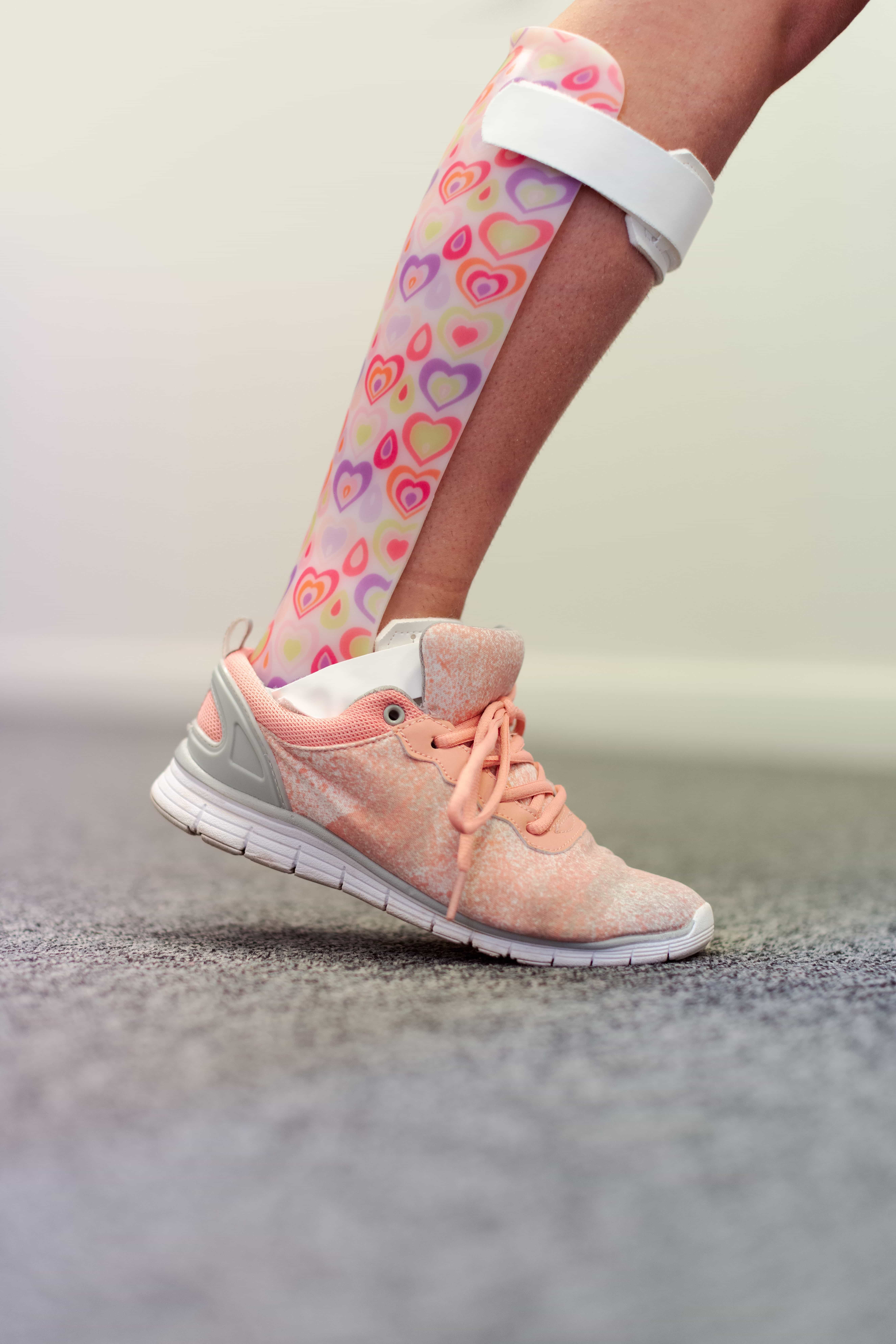
Broken bones are no joke. Injuries like breaks and fractures can have long-term effects if gone untreated and for children, they are that much more serious. Kids are known to horse around, rambunctiously playing without thinking about the consequences which can, unfortunately, lead to sustaining one of these injuries. Thankfully, casting and splinting have given us the ability to heal back to our healthy selves. They help to immobilize the injured limb to keep the bone in place until it fully heals. Of course, everyone has either had or knows someone who has needed a cast or splint, still, they are important to learn about just in case you or your child may need one someday.
Casts and splints are orthopedic devices that are used to protect, and support broken or injured bones and joints. Casts are usually made from fiberglass or plaster and splints are what you would call half-casts and provide less support than casts. Casts differ from splints because they supply more support and safety for a limb that is injured or broken.
Splints provide less support than casts, but the good thing is that they are faster and easier to use. Splints also can be tightened or loosened easily if the swelling in the arm or leg increases or decreases. Ready-made or “off-the-shelf” splints are available in many different sizes and shapes and in more unique cases, custom-made splints are required.
Simply put, casts and splints are used when a bone is broken and can also be used following orthopedic surgery. Sometimes splints are used immediately following an injury due to swelling of the injured area. After the swelling goes down, then a full cast might be applied to the injured limb. Sometimes a cast might have to be swapped during the healing process if the wounded area becomes less swollen and the cast gets looser. If this does happen, the cast might be replaced with a splint to provide more flexibility.
It may not seem important to know, but understanding the types of casts and splints that are available and what they are made of can not only improve your child’s healing process but can also potentially harm your child depending on if they have allergic reactions to specific chemical compounds.
Casts are partly made from fiberglass or plaster, which form the solid layer that protects the injured limb and keeps it restrained. Fiberglass has several advantages compared to plaster. It’s light, making the cast weight loss and comfortable. Fiberglass is the better choice in case the limb must be X-rayed during the healing process, and they are also available in a variety of colors that your child can choose from!
Your child’s cast may or may not be waterproof. The outside of most casts are made of waterproof fiberglass, but the inside liner must also be made of waterproof fabric in order for the cast to be waterproof. Your child’s healthcare provider will tell you which cast they have.
Typically, waterproof liners are breathable, and they transfer moisture away from the skin by letting water pass through and drain out which allows air to go into the cast and dry the skin.
Non-waterproof liners are used if your child is allergic to the waterproof liner. These will soak up water and take much longer to dry.
It’s important to investigate problems with blood circulation in the injured limb. A good strategy to use is checking the fingers or toes of the injured limb every day. The fingers or toes should have no swelling or changes in skin color. If you press on a nail bed until it turns white, the color should return to normal within 3 to 4 seconds after you take your finger off the nail. The fingers and toes should not be pale or bluish the temperature of the fingers and toes should feel warm. Also, check the skin around all edges of the cast each day for red, dry, swollen, cracked, blistered, or bleeding areas.
Your healthcare provider will remove the cast with a special cast saw when the bone has healed appropriately. The cast saw has a flat, rounded metal blade that vibrates. But don’t worry! The saw can cut through the cast without injuring the skin underneath. Your child’s physician will then cut the cast in several places, usually along both sides of the cast. After this, the cast will spread and open and a special tool is used to lift it off. Scissors are used to cut through the protective padding and stockinette layers which then are removed.
Complications can range from minor to severe and may vary according to the length of time that the cast is worn. It is best to speak to your child’s healthcare provider if you feel that the cast or splint is causing them harm.
Pressure sores are one injury that may occur. These are sores that develop on the skin under the cast. This can happen because the cast was too tight or did not fit correctly, causing excess pressure on one area.
There is also something called Compartment Syndrome. This is a complication caused by a tight or rigid cast that constricts a swollen limb. When the pressure inside the cast builds, it can cause damage to the muscles, nerves, or blood vessels in the space covered by the cast. The damage may be permanent if it is not discovered and treated promptly. Call your child’s healthcare provider or visit the emergency room immediately if you notice that your child has numbness or tingling in the affected limb, cold or pale skin, burning or stinging, or increased pain or swelling.
Even though we live in a world where your child can receive a cast or splint and make a full recovery, it is still important to promote safe play and educate them on how to protect themselves. Kids love to mess around and sometimes that leads to an injury, but this is no reason for them not to still be their energetic selves. The good news is that if your child does wind up needing a cast or splint, the experts at Chai Care will always be here to supply your little one with a perfectly mounted cast or splint!
* Legal disclaimer: The content of this article and the entire Chai Care blog is for educational purposes only; it does NOT constitute medical advice and must not be considered as such. Please consult a medical professional regarding any symptoms or health concerns you or your loved ones.
Jan 31, 2023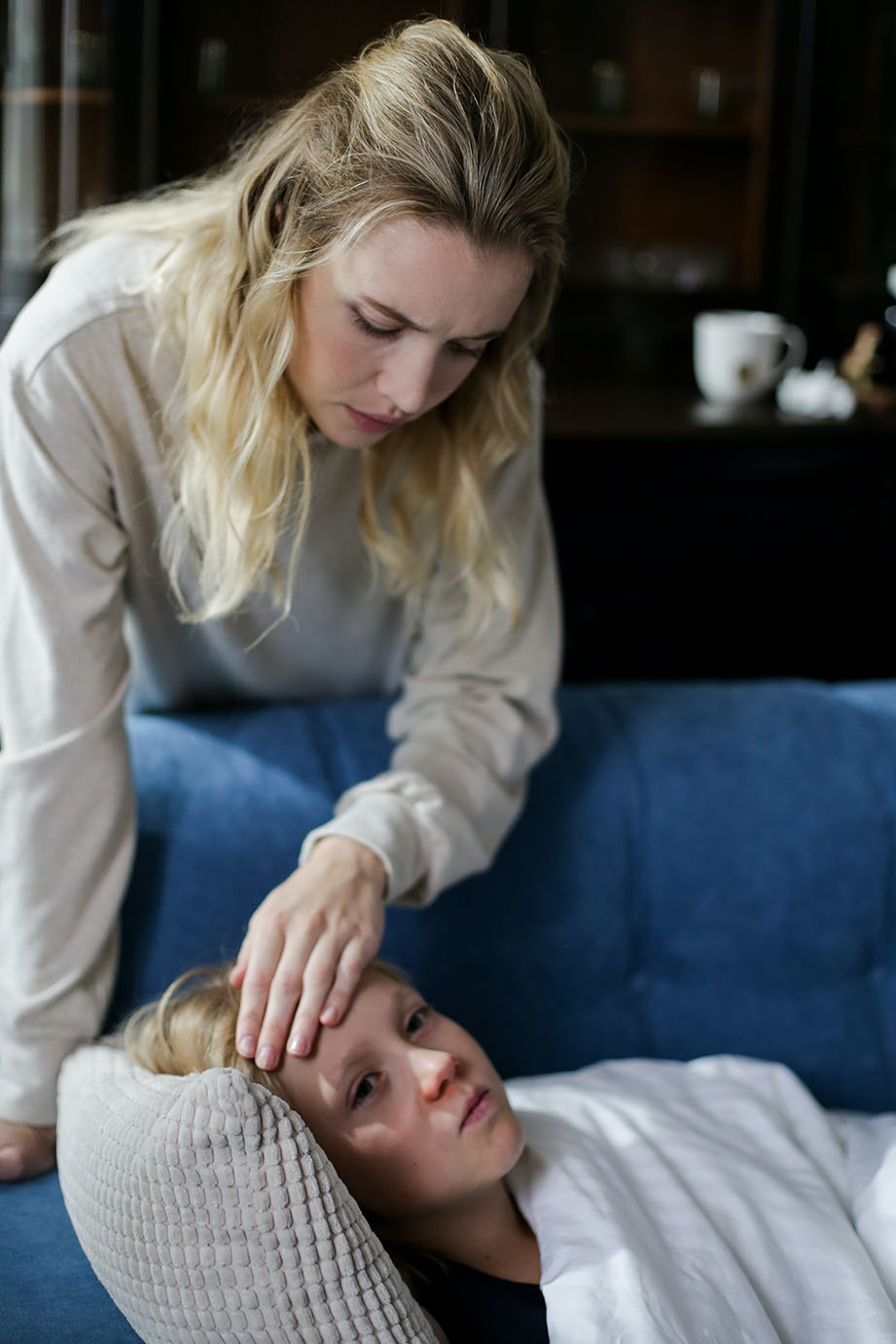
Probably the most notorious and most well-known illness a childhood illness catches is chickenpox. This infection is virtually unavoidable and when a child does contract it, you’ll be the first to know due to its obvious symptoms and your child complaining of severe discomfort. It’s one of those nasty viruses that almost every person suffers from when they are a youngster but even though it is treatable, it is important to know the signs and symptoms to not spread it to any other children.
So, what exactly is Chickenpox? Essentially, it is a viral infection that causes your child to have a fever and an itchy rash with spots all over their body. Once upon a time, chickenpox was a common childhood illness in the United States, especially in kids under age 12, but thankfully it is much rarer now, thanks to the varicella vaccine.
Chickenpox is caused by the varicella-zoster virus (VZV). This virus also can cause a painful skin rash called shingles (herpes zoster) later in life. After someone has had chickenpox, the virus stays dormant in the nervous system for the rest of a person’s life. It’s worth mentioning that the virus can reactivate later in life as shingles, however, kids who are vaccinated against chickenpox are much less likely to develop shingles when they get older.
Typically, chickenpox starts without the classic rash, with a fever, headache, sore throat, or stomachache. These symptoms may last for a few days, with the fever in the 101°–102°F range. After this, the red, itchy skin rash usually starts on the belly or back and face. After this, it spreads to almost everywhere else on the body, including the scalp, mouth, arms, legs, and genitals.
The rash begins with many small red bumps that look like pimples or insect bites. They appear in waves over 2 to 4 days, then develop into thin-walled blisters filled with fluid. The blister walls break, leaving open sores, which finally crust over to become dry, brown scabs. All three stages of the chickenpox rash (red bumps, blisters, and scabs) appear on the body at the same time. Sometimes the rash may spread wider or be more severe in kids who have weak immune systems or skin disorders like eczema.
Thankfully, symptoms are usually mild among children but may be life-threatening to children, adults, and people with impaired immune systems or healthy infants. Symptoms to look out for are fatigue, irritability, an itchy, red rash that progresses to tiny, fluid-filled blisters, fever, decreased appetite, muscle and/or joint pain, and a cough or runny nose.
The symptoms of chickenpox may resemble other skin problems or medical conditions. Making it important to consult your child’s healthcare provider for a legitimate diagnosis.
Chickenpox is very contagious. Most kids with a sibling who’s infected will most likely contract it and will show symptoms about 2 weeks after the first child does. If you do have multiple children, make sure the child with chickenpox covers their nose and mouth when sneezing or coughing. Because chickenpox is so contagious, a child who has it should stay home and rest until the rash is completely gone and all the blisters have dried. This takes about 1 week, but if you are unsure about whether your child is ready to return to school, ask your healthcare provider.
Medical professionals can usually diagnose chickenpox just by looking at the obvious rash. From there, they can guide you in watching for complications and in choosing different medicine to ease your child’s itching. It’s important that if you take your child to their healthcare provider to let the staff know ahead of time that your child might have chickenpox to not expose other kids in the office — for some children, a chickenpox infection could cause serious complications.
Since a virus causes chickenpox, antibiotics cannot treat it. But antibiotics are needed if bacteria infect the sores. This usually happens when kids scratch and pick at the blisters. An antiviral medicine might be prescribed for people with chickenpox who are at risk for complications, but this will depend on the child’s age, health, the extent of the infection, and the timing of treatment.
The great news is that chickenpox can be prevented! Most children who get the chickenpox vaccine will not get chickenpox. And if they do get chickenpox, their symptoms will be much milder. Healthcare providers highly recommend that kids receive the vaccine when they’re 12–15 months old and a booster shot when they’re 4–6 years old. Children 6 years of age and older who have never had chickenpox and aren’t vaccinated can and should get two doses of the vaccine and kids who have had chickenpox do not need the vaccine — they usually have lifelong protection against the illness.
The best to way to help the itchiness and discomfort of chickenpox is by using a cool wet compresses or giving your child a bath in lukewarm water every 3–4 hours for the first few days. It’s worth mentioning that oatmeal bath products can help to relieve itching. Other methods of pain relief would be patting (not rubbing) the body and putting calamine lotion on itchy areas.
To prevent scratching, it’s best to use mittens or gloves on your child’s hands to avoid scratching during sleep and trim their fingernails to keep them clean.
If your child has blisters in the mouth, give cold, soft, bland foods because chickenpox in the mouth can make it hard to drink or eat. Avoid anything acidic or salty, like orange juice or pretzels.
Most chickenpox infections don’t need special medical treatment but, in some cases, unexpected problems can happen. You should call your healthcare provider if your child has a fever that lasts for more than 4 days, has a severe cough or trouble breathing, has an area of rash that leaks pus, has a severe headache, or lastly, has a stiff neck.
In most cases, chickenpox is not something to lose sleep over. Nearly every child gets it and even though watching your child in agony is unpleasant, this virus goes away quickly and will soon become a thing of the past. Even though there are many ways you can treat your child at home, it is still best to take your kid to their healthcare provider and the experts at Chai Care will always be here to offer their top-notch service as they supply your little one with exceptional care!
* Legal disclaimer: The content of this article and the entire Chai Care blog is for educational purposes only; it does NOT constitute medical advice and must not be considered as such. Please consult a medical professional regarding any symptoms or health concerns you or your loved ones.
Jan 30, 2023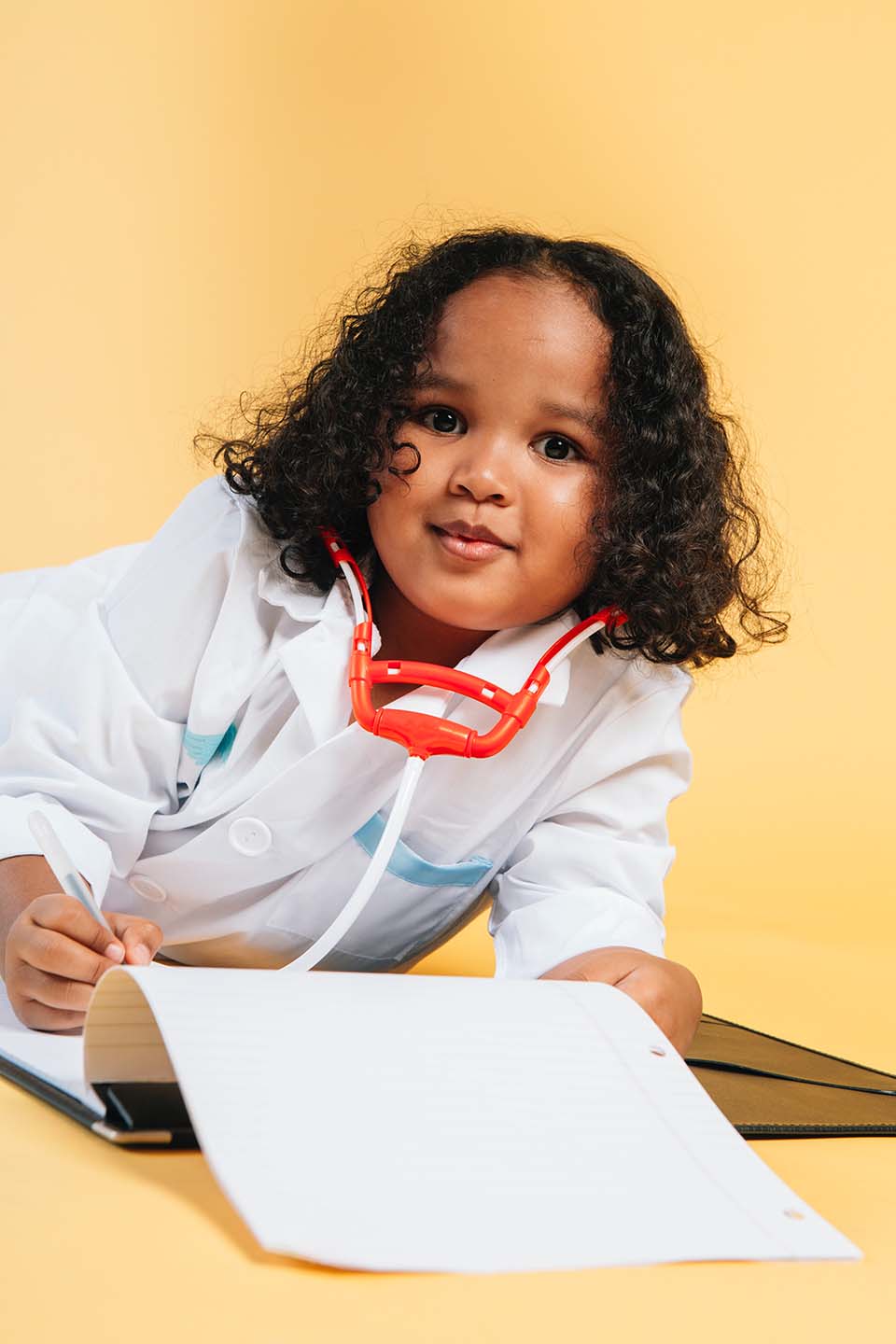
It’s fair to say we all have had a nosebleed at some point in our lives. They are extremely common and can happen for many reasons, but when you see a child with one, they are that much more frightening, especially if you’re the parent of the child. A million questions race through your mind, concerned and panicked that it is due to a broken nose or a head injury. Fortunately, we live in a world with plenty of methods to treat a nosebleed, one of them being nasal cauterization—a simple procedure that can drastically improve your child’s quality of life.
Nasal cautery, or nasal cauterization, is a procedure used to treat nosebleeds, also known as epistaxis. This procedure is when a chemical or electrical device is applied to the mucous membranes in the nose to stop the bleeding. This is performed with topical anesthetics, usually in an operating room under general anesthesia. Sometimes this procedure is performed in conjunction with other procedures to improve nasal breathing such as sinus surgery, nasal endoscopy, or septoplasty.
Typically, children benefit from nasal cautery when they have recurrent nosebleeds. These episodes can occur from a prominent blood vessel in the nose that bleeds from trauma (nose picking, rubbing the nose, or bumping the nose), and from drying of the mucous membranes lining the nose. Certain underlying medical conditions can make children more prone to nosebleeds, including individual or familial bleeding disorders, platelet disorders, cancers, or medications used to treat other conditions.
If an underlying medical condition or medication is the cause of the nosebleeds, first attempts are aimed to treat or to remove these sources of the tendency for bleeding. In addition, nasal creams, ointments, gels, nasal saline spray, and increased environmental humidification can help improve nosebleeds by decreasing the dryness in the nose. This makes the nose less prone to bleeding and for young children, it’s best to avoid nose-picking. If nosebleeds continue despite these attempts, nasal cautery may be recommended.
The procedure is typically performed either in the pediatric ENT clinic procedure room or in an operating room. The procedure only takes 5-10 minutes but may take longer depending on the severity and any additional combined procedures planned. The surgeon will provide an idea of how much time is expected, but this may change during the procedure.
After the procedure, your child may be asked to stay in the hospital, but in most cases, this won’t happen. When home, Tylenol or Ibuprofen is typically appropriate for pain control. Sometimes stronger narcotic pain medications may be prescribed for additional pain control. Also, the use of topical moisturizing and/or antibiotic ointment in the nose is recommended after the procedure. This will help with healing and decreases crusting. If the child develops any concerning symptoms after the procedure, including pauses in breathing, color change of the skin (particularly if the lips, face, or hands are turning blue), appearing lethargic or tired, severe bleeding, or any other sudden change from his/ her normal behavior, please seek immediate medical attention.
As we know, nose cautery can help prevent nosebleeds. The healthcare provider uses a chemical swab or an electric current to cauterize the inside of the nose. This seals the blood vessels and builds scar tissue to help prevent more bleeding. For this procedure, the provider will numb the inside of your child’s nose and once the procedure is finished, your child may feel itching and pain in the nose for 3 to 5 days but not to worry, over-the-counter pain medicines can help with the pain! Keep in mind, your child may want to touch, scratch, or pick at the inside of the nose. Make sure to watch your child carefully so you can stop them before any touching or picking because this will cause more nosebleeds.
It’s important to keep a lookout for any signs of distress in your child and to know when you should contact your provider. If your child has pain that does not get better after your child takes pain medicine, they get another nosebleed and the nose is still bleeding after you have pinched the nose shut 3 times for 10 minutes each time, they have a fever or if your child does not get better as expected, then it may be time to bring your child back in for a check-up.
Afterthought
If you feel that your child may need nasal cauterization, it’s best not to wait, hoping they will get better on their own. We live in a country that has more than enough reliable healthcare providers, Chai Care being one of them! Our trained experts will always be here to help in a time of need and will make sure your youngster is back to normal in no time!
* Legal disclaimer: The content of this article and the entire Chai Care blog is for educational purposes only; it does NOT constitute medical advice and must not be considered as such. Please consult a medical professional regarding any symptoms or health concerns you or your loved ones.
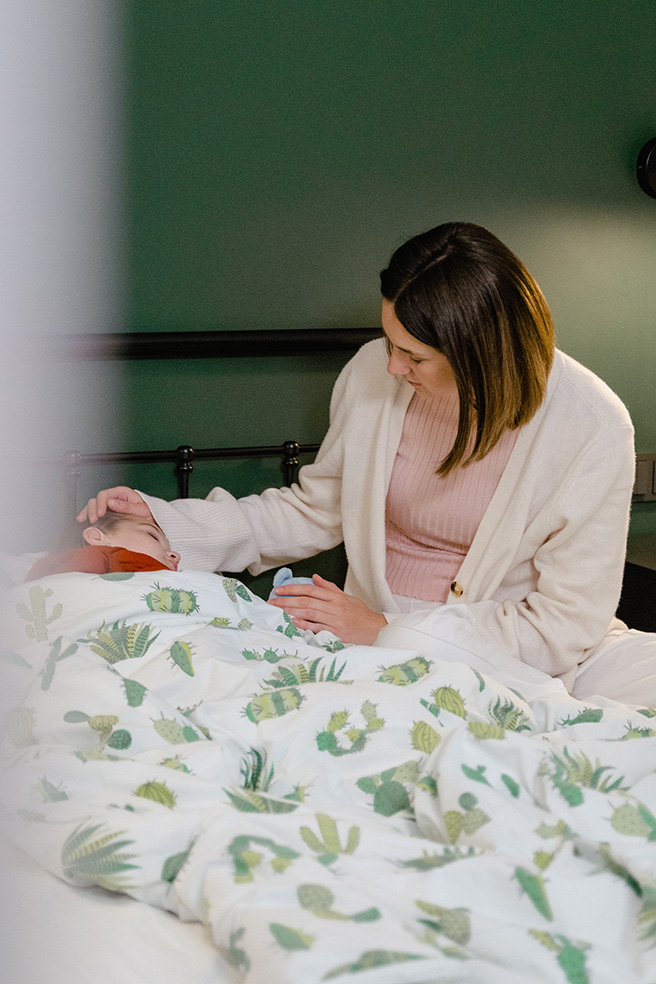
As bad as breaking a bone or burning yourself can be, most consider infections to be worse due to their ability to spread and potentially come back again. Children are some of the most vulnerable people to contracting a virus because they typically have worse hygiene habits and are less knowledgeable of the signs and symptoms. Cellulitis is definitely one of those bacterial infections to watch out for because if left untreated it can lead to more serious issues.
Cellulitis is a deep bacterial infection of the skin that usually occurs after some type of trauma causes an opening in your child’s skin. Typically, the infection involves your child’s face, arms, and legs. In most cases, human or animal bites or injuries that occur in water can also cause infection and immediate treatment can help prevent the spread of cellulitis. In some cases, cellulitis is considered an emergency and your child’s healthcare provider may treat your child in the hospital depending on the severity of their condition.
Cellulitis is a tricky infection because many of the symptoms may appear as something less significant. If your child has swollen or warm skin, bruising, chills, a fever, or a red streak from the original site of pain, there is a good chance they have cellulitis. In some cases, cellulitis is considered an emergency and you should consult your child’s healthcare provider if the area affected is causing your child to complain of numbness, tingling, or other changes in a hand, arm, leg, or foot, if the skin appears black, or if the area that is red and swollen is around your child’s eyes or behind the ears.
The diagnosis of cellulitis is usually based on the medical history and physical examination of your child. Blood and skin samples may also be taken to confirm the diagnosis and the type of bacteria present.
Specific treatment for cellulitis will be determined by your child’s healthcare provider based on your child’s age, overall health, and medical history. However, treatment may include oral or intravenous antibiotics, warm, wet dressings on the infection site, surgical intervention, and rest.
If your child’s arm or leg is affected, their provider may also have you elevate the extremity and decrease the amount of activity. Also, based on the physical examination, your child’s physician may treat your child in the hospital depending on the severity of the cellulitis. In the hospital, your child may receive antibiotics and fluids through an intravenous catheter.
Complications can be reduced with prompt and accurate treatment by your child’s provider. The most common complications include meningitis, septic arthritis, and an infection of a joint caused by glomerulonephritis.
To prevent cellulitis, protect the skin from cuts, bruises, and scrapes. This isn’t easy, especially for active kids or those who play sports. It’s best if your child uses elbow and knee pads, wears a bike helmet when riding, shin guards, long pants, long-sleeved shirts while hiking in the woods, and sandals on the beach.
If your child does get a cut or scrape, wash it well with soap and water followed by applying an antibiotic ointment, then cover the wound with an adhesive bandage or gauze and lastly, check the wounds often for the first few days to see if any signs of cellulitis begin.
You should contact your provider if any area of your child’s skin becomes red, warm, and painful — with or without fever and chills. This is even more important if the area is on the hands, feet, or face, or if your child has an illness or condition that suppresses the immune system. Also, if your child gets a large cut or a deep puncture wound but most importantly if an animal bites your child, especially if the puncture wound is deep, contact your provider immediately. Cellulitis can happen quickly after an animal bite. Even human bites can cause skin infections too, so call the doctor if this happens.
To recap, cellulitis is a bacterial infection of the skin that often happens in areas where the skin is broken. Because of this, it’s important that your child always washes their hands before and after touching the infected area to make sure it doesn’t get any worse. With that being said, there are only so many at-home options at your disposal which is why Chai Care will always be here to offer top-notch aid!
* Legal disclaimer: The content of this article and the entire Chai Care blog is for educational purposes only; it does NOT constitute medical advice and must not be considered as such. Please consult a medical professional regarding any symptoms or health concerns you or your loved ones.
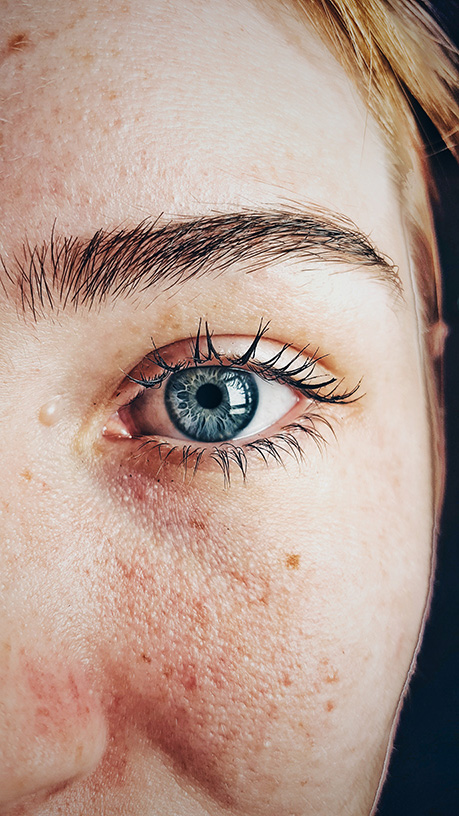
Out of all the different rashes and skin conditions that exist, Eczema is one of the most common that a child can have. As irritating as eczema may be, there are plenty of ways to avoid it and if your child does have it, there are plenty of ways of remedying the pain. So, look no further because Chai Care has you covered in all the ways to help your kid with their eczema!
Eczema is a skin problem called atopic dermatitis. Atopic dermatitis often begins in infancy, affecting about 15 to 20% of children. It usually improves as the child grows older and may resolve by school age or puberty, however, some children with atopic dermatitis may have more chronic diseases.
Children with eczema have a form of sensitive skin that may be more easily irritated by sweating, heat, rough clothing, some detergents, soaps, and cleansers. Children with atopic dermatitis may also have allergies to foods, animals, dust mites, tree pollens, and grasses, although it is not clear that these allergies cause eczema in most children. In many cases, identifying these allergies does not help eczema. In rare cases, some children with atopic dermatitis may develop allergies to chemicals in their moisturizers, skin care products, clothing, or topical medications.
Children with eczema develop red, dry, itchy patches on the skin that result from inflammation. Itching can be severe and constant, causing them much discomfort. With frequent scratching, the skin may develop blisters, oozing, crusting, or sores from the infection. Sometimes, if the child scratches for many weeks to months, the skin may start to become very rough, leathery, and darker in color. In infants, eczema commonly affects the face, scalp, arms, and legs and in older children, eczema may involve only the insides of the elbows and backs of the knees. It’s worth mentioning that some children with severe eczema may have it spread across their entire bodies.
Unfortunately, there is no cure for eczema, although it can usually be fixed with a good skincare routine. Frequent follow-ups with your healthcare provider are important so they can see whether the prescribed medicines are working. Your provider may need to adjust treatment during different seasons of the year, during flares, or as your child gets older. Outside of what your healthcare provider may recommend, there are plenty of at-home care options you can use to help your child without having to step foot inside a clinic.
For some children, limiting bathing to one to three times a week is helpful. Bathing more often can dry out the skin and actually make the itching worse. For children with environmental allergies such as pollens and animal dander, bathing more often, especially after contact with known allergens, may be helpful. When bathing, use warm water and a gentle, non-soap cleanser or Cetaphil cleanser. This should range from 5 to 10 minutes and when finished, pat the skin dry with a towel and lastly, apply topical medicines or moisturizers as instructed, right after bathing while the skin is still damp.
Your healthcare provider may prescribe topical steroids or other creams or ointments to treat your child’s eczema. When using this, apply a small amount of medicine to the affected areas up to two times a day as needed to keep eczema under control. It’s important to always apply the topical medication at least 30 minutes before applying moisturizer.
If your child’s eczema flares, you may need to use a stronger topical steroid for a short time. Use these steroids twice a day or as instructed by your healthcare provider on areas that have flared in place of your everyday steroids. Contact your provider if the areas are not any better after a week’s time. As your child’s eczema improves, you should be able to use the topical medication less often, ideally two to three times a week to keep your child’s skin clear. Make sure to not overuse or abuse the topical steroids because this may harm your child’s skin, causing stretch marks and spider veins.
When using a recommended moisturizer, apply a thick layer of cream 30 minutes after you use any topical medicines. This allows time for the medicine to be absorbed into the skin and the moisturizer will then seal in the medicine. Make sure to not use a cream that comes in a pump bottle, as these are usually lotions and won’t be effective.
It’s worth mentioning a few good moisturizers, but your healthcare provider may suggest something else. Creams that parents seem to champion are Cetaphil, Aquaphor, Vaseline, and Aveeno, just to name a couple.
Antihistamines are a type of allergy medicine that is used to decrease itching. They are most helpful when given before bedtime due to them making children sleepy. If you’re wondering what Antihistamines are, they are medicines such as Atarax and Benadryl. Some children with environmental allergies may also need to take a daily, non-sedating antihistamine such as Zyrtec, Claritin, or Allegra in the morning to control their allergy symptoms.
Wet dressings can be placed on the child after applying topical steroid medication. This makes the medication more effective by helping it penetrate deeper into the skin. You may also use an ace wrap or wet cotton pajamas, and after the nighttime dose of topical steroid application is applied, the child can then wear them to bed for an increased duration of treatment. They can also be worn after the application of moisturizing cream to lock moisture into the skin.
Follow-up visits are very important when it comes to eczema. Your healthcare provider will examine your child’s skin and monitor for side effects of steroid medication use and infections and may change the medications being used. It is important to follow their instructions and keep follow-up appointments to ensure maximum healing.
You should call your healthcare provider if your child develops open, oozing areas of skin that are painful or associated with a fever or if your child’s eczema worsens or does not improve with the use of prescribed medications.
Most infants and children with mild to moderate eczema can be managed by their primary healthcare provider as long as the treatment plan is followed and follow-up visits are made. Referral to an allergist or dermatologist is appropriate if certain foods or allergies are suspected, skin infections are frequent, or if your child is not responding to the treatment plan prescribed by the primary care provider after several follow-up visits and adjustments to the treatment plan have been made.
Truth be told, Eczema is not something to lose sleep over. Even though it may cause your child discomfort and in rare cases lead to a more serious skin condition, 9 out of 10 times it is nothing more than a seasonal rash that is easily treatable. Still, no parent enjoys watching their child suffer which is why the dedicated staff at Chai Care will always be here to supply your child with sensitive care!
* Legal disclaimer: The content of this article and the entire Chai Care blog is for educational purposes only; it does NOT constitute medical advice and must not be considered as such. Please consult a medical professional regarding any symptoms or health concerns you or your loved ones.
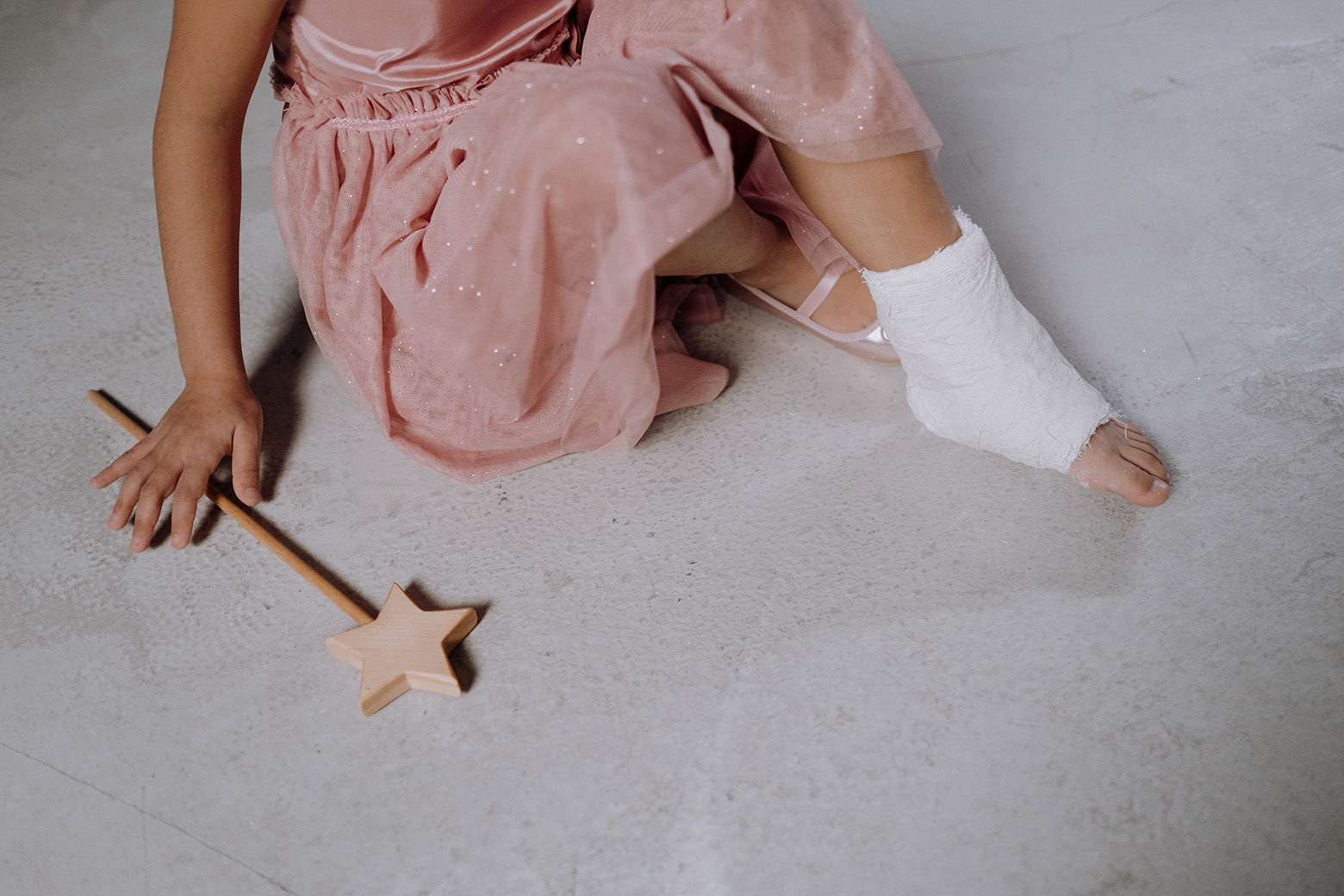
It is every parent’s worst nightmare to see their child with an injury, especially when it is something as serious as a fracture or dislocation. These are extremely common childhood injuries because young children have bones that are growing and are not yet fully developed, making them more fragile than adult bones. Because of this, it is paramount to understand the best ways how to keep your youngster safe, as we all know how adventurous and energetic kids can be. However, there are some important differences between a fracture and a dislocation that are crucial to know so as not to confuse the two.
Simply put, a fracture is a term used for a broken bone. They can occur in any bone of the body, but the most common fractures in children are in the wrists, arms, and elbows, which usually occur after a fall in most cases, the injury will heal well and cause no long-term complications.
Older children will usually be able to tell you where they are in pain and can explain what exactly happened to better understand the situation. This can make it easier to identify if the injury is in fact a fracture or potentially something more significant. It can be more difficult to identify a fracture in infants or toddlers due to their lack of communication skills. They may cry and not use the affected area, rather than articulate what they are feeling.
A dislocation is a joint injury. It occurs when the ends of 2 connected bones come apart. Fortunately, it is not common in younger children! This is because their growth plates are weaker than the muscles or tendons. Growth plates are the areas at the end of long bones where the bones grow, making them more common in teens and adults.
A dislocation happens when extreme force is put on a joint. It can occur if your child falls or takes a hit to the body, such as while playing a contact sport. It’s important to note that when a dislocation occurs, ligaments can be torn—these being flexible bands of fibrous tissue, joining various bones and cartilage. They also bind the bones in a joint together. The hip and shoulder joints, for example, are called ball and socket joints. Lots of force on the ligaments in these joints can cause the head of the bone (ball) to come out of the socket partly or fully. The most dislocated joint is the shoulder.
Now that we know what both a fracture and a dislocation are, it’s time to discuss how we go about treating them.
In most cases, if your child has a fracture, they will need to restrict movement of the injury site to allow the bone time to heal. Some fractures may require a splint or a partial cast, held in place with bandages. A splint or partial cast helps to support the injured area, allowing the bone to rest and heal while also providing your child pain relief. A splint or partial cast generally does not have to be worn for as long as a full cast. Casts are required for three weeks to three months depending on the type and location of the injury – your healthcare provider will estimate how long it will be required.
If the injury has caused the bones to move out of place, your healthcare provider will need to move the bones back into the correct position which is known as a “reduction.” These procedures are usually done under sedation or anesthesia in the emergency department or operating room. Fractures that require a reduction will need a full plaster cast (one that wraps around the limb) to allow the injury to heal. Full plaster casts stay on your child for up to three months, depending on the injury.
Treatment for a dislocation will depend on your child’s symptoms, age, and general health. It will also depend on how severe the injury is; however, all dislocations need medical care right away to prevent additional injury because untreated dislocations can lead to serious problems. One of the most common forms of treatment is R.I.C.E. which stands for rest, ice, compression, and elevation of the dislocated area. Other forms of treatment would be casting, splinting, repositioning, and in serious cases, surgery.
Whether it be a fracture or a dislocation if your child was wearing a cast and once it has been removed, your child’s skin may be dry and itchy. Bathe the skin with warm soapy water, and apply a plain, non-perfumed moisturizer.
After a fracture, children normally regain strength by engaging in gentle activity and play. Physiotherapy is usually not needed. Your healthcare provider will give your child specific advice about when and how they can return to sport, in most cases four to six weeks later. If your child had surgery, full-contact sports should be avoided for two to three months, but you should discuss this with your child’s healthcare provider.
It is highly probable that at some point your child is going to face one or possibly both injuries. Rather than looking at it as a negative thing, it’s better to see it as a sign that your child is a typical kid who is active and enjoys playing with their friends. When that day does arrive, you can be your child’s hero by understanding the signs, symptoms, and methods on how to take care of them, but even with your newfound knowledge, the experts at Chai Care will always be here to help!
* Legal disclaimer: The content of this article and the entire Chai Care blog is for educational purposes only; it does NOT constitute medical advice and must not be considered as such. Please consult a medical professional regarding any symptoms or health concerns you or your loved ones.
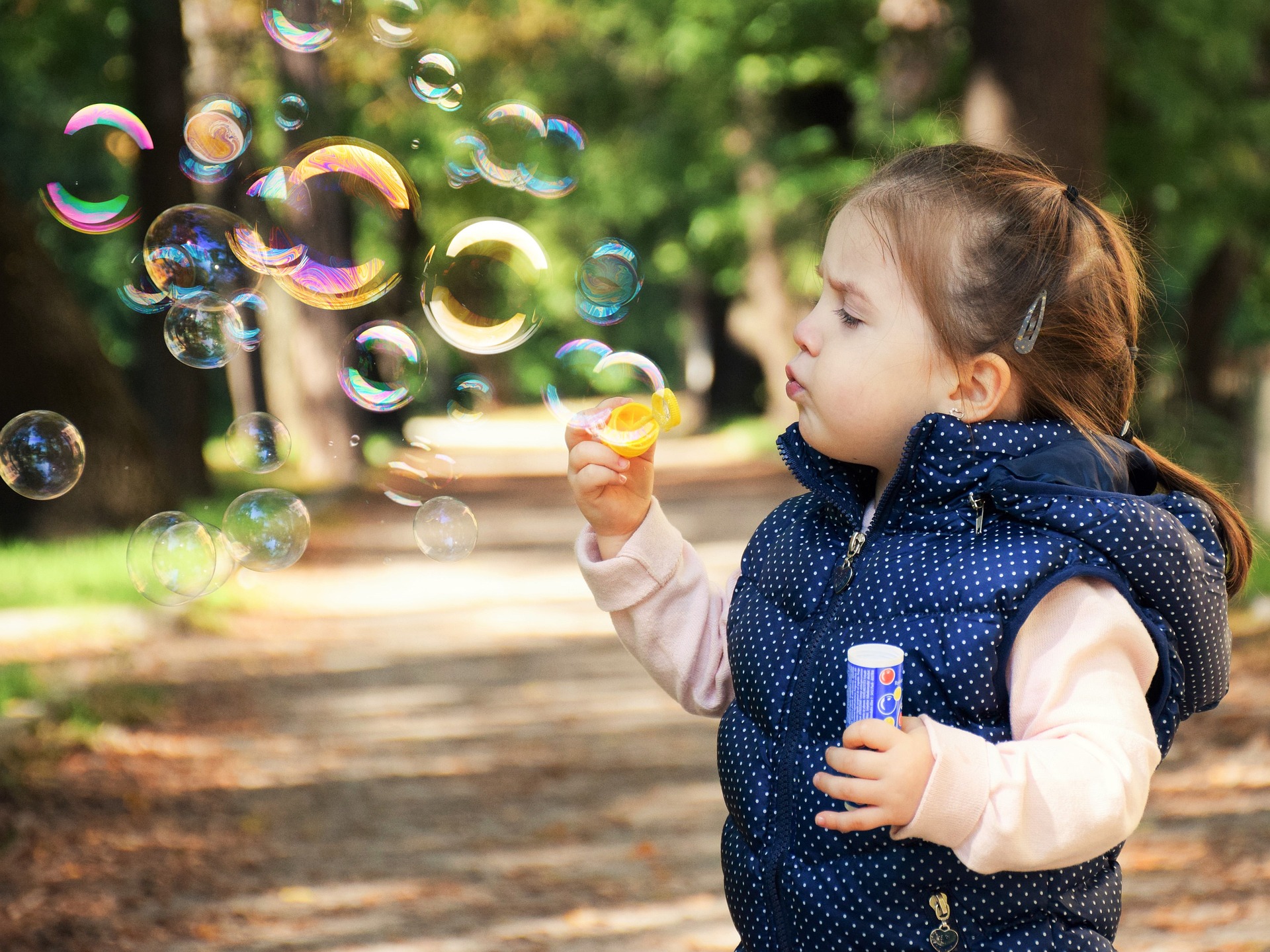
Out of every injury a child can get, head trauma is considered to be the scariest. They can lead to all sorts of issues, especially later in life, which is why it is paramount to be as informed as humanly possible. The truth is head injuries can happen from many things, not just direct blows to the head or contact sports which is why understanding the signs and symptoms of them are even more crucial to be aware of.
Unfortunately, head trauma is common in children and teens. They can hurt the scalp, skull, brain, or blood vessels. They can be as mild as a bump on the head, or more serious, like a concussion. In kids, most are mild and don’t injure the brain. A head injury is a broad term that describes an extensive array of injuries that occur to the scalp, skull, brain, and underlying tissue and blood vessels in the child’s head. Head injuries are also commonly referred to as brain injury, or traumatic brain injury, depending on the extent of the head trauma.
In most cases, head injuries in childhood are due to falls and slips, however, they can also occur from car crashes, bike accidents, sports injuries, and child abuse. These are the most common methods, but the truth is there are many other ways your child may sustain head trauma.
Essentially there are two different types of head injuries: external and involving the scalp and internal involving the skull, brain, or blood vessels.
It’s also important to know that injuries can potentially cause a concussion, contusion, fracture, or bleeding. If this does happen, you should bring your child to their healthcare provider immediately for further observation.
The list can be very long for the signs of a head injury depending on the severity of your child’s injury but the most important symptoms to look out for would be a swollen scalp, headache, loss of conciseness (in serious cases), confusion, irritability, ringing in the ear and fatigue. Again, head injuries can be complicated and even discrete which is why if you fear your child may be experiencing one, you should take them to their healthcare provider for a professional opinion.
Healthcare providers diagnose head injuries by asking questions about how the injury happened and doing a careful examination of the head and checking to see how the nerves are working. Most children with a mild brain injury don’t need medical tests, however, providers will often do a CAT scan of the head if the injury is more serious. In this case, your child may need to get blood tested, X-rayed, or receive an MRI.
You should contact your health care provider immediately if your child had a head injury is an infant, has lost consciousness, even for a moment, wines of head and neck pain (younger children who aren’t talking yet may be fussier), vomits more than one time, won’t awaken easily, becomes hard to comfort, or isn’t walking or talking normally.
If your child is not an infant, has not lost consciousness, and is attentive and behaving regularly after the fall or blow, put an ice pack or instant cold pack on the injured area for 20 minutes every 3–4 hours. If you use ice, always wrap it in a washcloth or sock. Ice placed right on bare skin can injure it. Watch your child carefully for the next 24 hours. If the injury happens close to bedtime or naptime and your child falls asleep soon afterward, check in a few times while they sleep. If your child’s skin color and breathing are normal, and you don’t sense a problem, let your child sleep unless the doctor tells you otherwise. There’s no need to keep a child awake after a head injury. It’s also important to trust your gut. If you think your child doesn’t seem to be acting like they normally do, partly awaken your child by sitting them up. They should fuss a bit and attempt to resettle. If your child still seems very drowsy, try to awaken them fully. If you can’t wake your child, call your healthcare provider or 911 for an ambulance.
The hard truth is that you can’t protect your child from every injury, but you can help prevent head trauma with precautions and by teaching them how to play safely. Your child should always wear a bike helmet that fits well and use the proper sports equipment for inline skating, skateboarding, snowboarding, skiing, and contact sports. Make sure they wear a safety seat or seatbelt every time they’re in the car and if they do sustain a head injury, wait until their healthcare provider says it’s OK before returning to rough play or sports. If the brain gets injured again while it’s still healing, it will take even longer to completely heal.
Head Trauma is a scary injury that no parent wishes to see their child suffer from. This is why by understanding the signs and symptoms of them and teaching your child how to safely play, you greatly reduce the risk of your child sustaining any sort of head injury. It’s an unfortunate part of life that we all get banged up every now and again but the team of dedicated staff members at Chai Care will always make sure to be here if your child ever needs a helping hand!
* Legal disclaimer: The content of this article and the entire Chai Care blog is for educational purposes only; it does NOT constitute medical advice and must not be considered as such. Please consult a medical professional regarding any symptoms or health concerns you or your loved ones.
Jan 10, 2023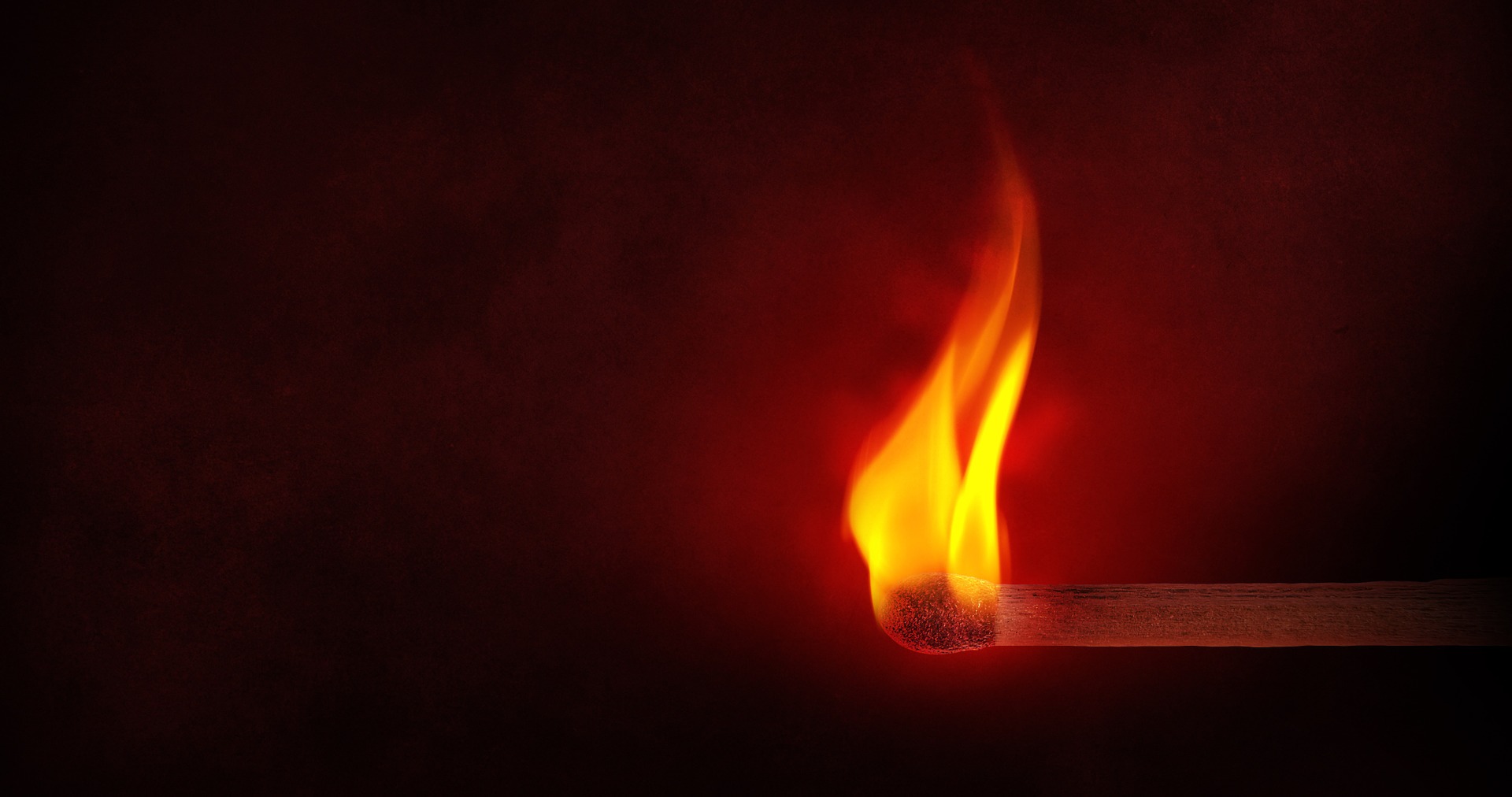
If you play with fire you are going to get burned. As adults, we know this already, most likely from a bad experience, but children have yet to figure this out. Burns are nothing to trifle with and can cause serious damage, which is why it is paramount to stay informed and to teach our youth the danger of playing with fire and the consequences that may ensue.
As you already know, burns are a type of injury caused by heat. Heat can be thermal, electrical, chemical, or electromagnetic energy. Most burn accidents occur at home. Interestingly enough, about 75% of all burn injuries in children are preventable. Scalding is the leading cause of burn injury for children, while smoking and open flames are the leading causes of burn injury for older adults.
We all know what a burn is, but many people don’t know what the most common burns are. First off, there are thermal burns. These burns raise the temperature of the skin and tissue underneath. Thermal burns happen from steam, hot bath water, tipped-over coffee cups, hot foods, cooking fluids, etc. Next, there are radiation burns which happen from exposure to the sun’s ultraviolet rays (a sunburn because the skin isn’t well-protected in the sun) or from radiation such as during an X-ray. Then, there are chemical burns that happen from strong acids (like drain cleaner or button batteries) or spilling chemicals (like bleach) onto the skin or eyes. Lastly, electrical burns. These are from contact with electrical current and can happen from things like biting on electrical cords or sticking fingers or objects in electrical outlets, etc. Knowing the type of burn a child has can help with first-aid measures. All burns should be treated quickly to lower the temperature of the burned area and reduce damage to the skin and tissue underneath.
Simply put, there are first, second, and third-degree burns—1st being the least significant and 3rd being the most serious.
…Also known as superficial burns, burns are the mildest type of burns. They’re limited to the top layer of skin. Signs and symptoms to look out for would be redness, pain, and minor swelling. The skin is dry without blisters. Healing time is about 3–6 days; the superficial skin layer over the burn may peel off in 1 or 2 days.
…Which are a bit more serious. These burns are more serious and involve the top layer of skin and part of the layer below it. The burned area is red and blistered and can swell and be painful. The blisters sometimes break open and the area is wet looking with a bright pink to cherry red color. Healing time varies depending on the severity of the burn. It can take up to 3 weeks or longer.
…Are the most serious type of burn. They involve all layers of the skin and the nerve endings there and may go into underlying tissue. The surface appears dry and can look waxy white, leathery, brown, or charred. There may be little or no pain or the area may feel numb at first because of nerve damage. Healing time depends on the severity of the burn. Most need to be treated with skin grafts, in which healthy skin is taken from another part of the body and surgically placed over the burn wound to help the area heal.
Most small, blistering burns can be treated and cared for at home, however taking your little one to your healthcare provider will always be your best bet. If you have any questions about whether a burn can, be taken care of at home, discuss it with your physician. If you do choose to take the home-care route, make sure to cool the burn by running cool running water over the burn for about five minutes. This helps stop the burning process and decreases pain and swelling. Do not put ice on a burn and don’t rub the burn, because this can worsen the injury. Do not break blisters as this can increase the risk of infection at the burn site. Make sure to cover the burned area with a clean bandage that will not stick to the burned site. This helps decrease the risk of infection and decreases pain. Lastly, protect the burn. It’s crucial to keep the burn site clean with gentle washing with soap and water. Do not apply any ointments to the burn site unless instructed by your pediatrician. Never apply butter, greases, or other home remedies to a burn before discussing it with your healthcare provider, as these can increase the risk of infection as well.
If you believe that your child is suffering from a third-degree burn and has blisters larger than 2 inches or full-thickness burns with white or charred skin, go to an emergency department. It is important that before coming in you should cover the burn with a sterile dressing or clean washcloth or towel.
Superficial or mild partial thickness burns hurt for about two days and peel like a sunburn in about a week. These burns shouldn’t leave a scar if managed correctly. If the burn is open, your child will need a tetanus booster if it has been more than five years since his/her last tetanus shot, your child has had less than three tetanus shots in his/her lifetime, or if you’re not sure when your child had a tetanus shot last. Your child should get this shot from your pediatrician within three days of the burn. Call your healthcare provider immediately if your child’s burn looks infected. Symptoms include a large red area or streak larger than 2 inches around the burn. A fever may or may not be present. If there is increased redness or notice any signs of infection, bring your child to Chai Care and our top-notch staff will gladly take care of your little one!
* Legal disclaimer: The content of this article and the entire Chai Care blog is for educational purposes only; it does NOT constitute medical advice and must not be considered as such. Please consult a medical professional regarding any symptoms or health concerns you or your loved ones.